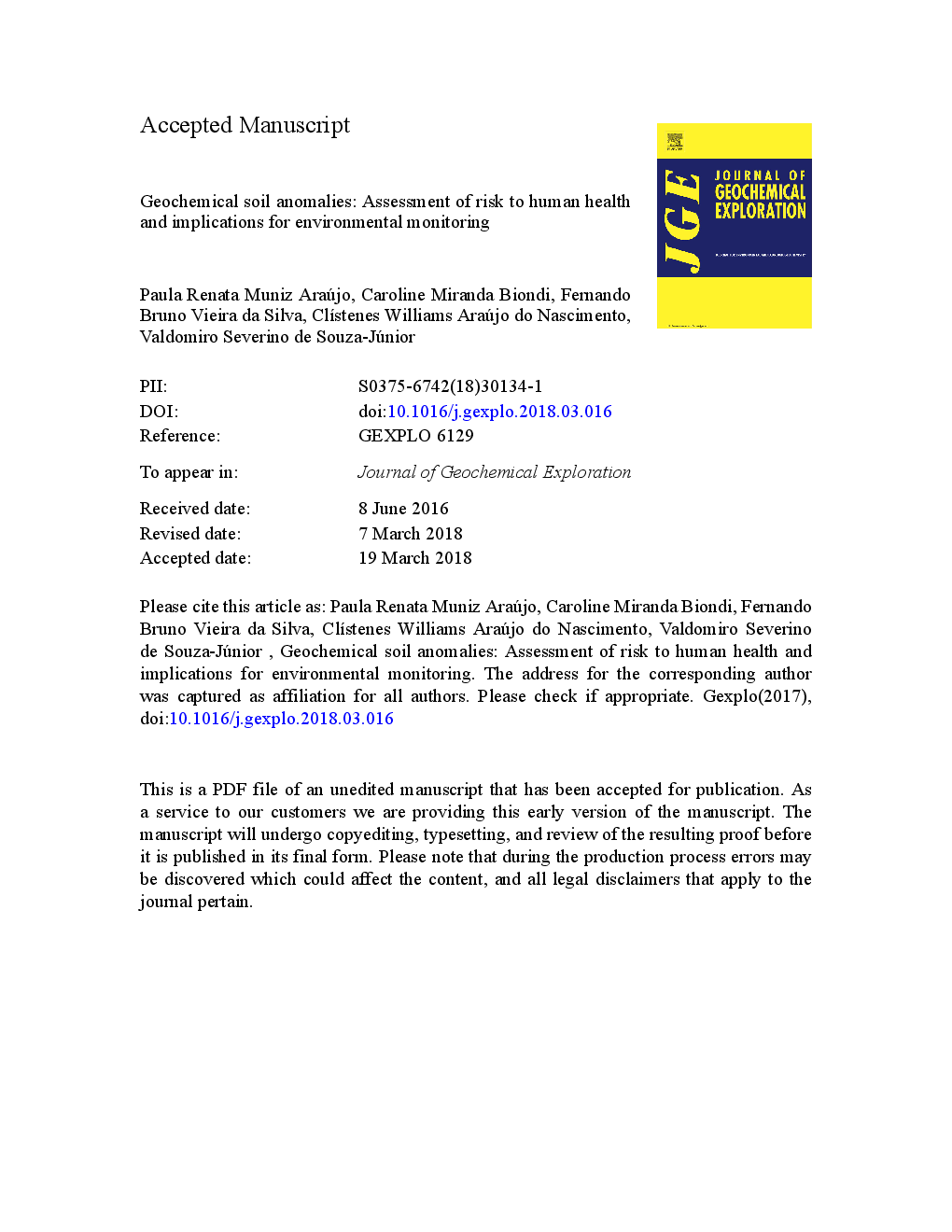Areas with natural geochemical anomalies are not normally included when defining geochemical backgrounds for metals. However, it is important to understand the distribution and extent of anomalous geochemical values when assessing the risks associated with metal contamination to the ecosystem. This study measured the concentrations of Cd, Cr, Cu, Hg, Ni, Pb, and Zn in pedogenetic soil horizons with geochemical anomalies. The factors that control the vertical distribution of these elements (pH, organic carbon, cation exchange capacity, lithogenic metals, granulometry) were also examined. Except to Cd and Hg, the average surface concentrations of the metals studied exceeded the expected background levels for the region. The concentrations of Cr, Cu, and Ni were higher in soils developed from basalt, while Cd, Hg, Pb and Zn exhibited concentrations with no direct relation to the type of parent material. All the metals are of natural origin with the exception of Zn, which was influenced by anthropogenic activities in two soil profiles. With an exception of the Cd and Hg contents that were low for all analyzed soils, samples showed geochemical anomalies for all the metals, in particular Cr, Ni, and Pb, with values high enough to warrant investigation due to the possible impairment of soil functions and potential risks to human health. However, when samples were evaluated using sequential extraction analyses, results showed at least 84% of the total content of Cr, Ni e Pb was associated with the residual fraction, indicating a low potential for mobility and availability in the environment. Measures of the hazard quotient and the hazard index showed that adverse impacts on human health are not likely to result from the high concentrations of Cr, Ni, and Pb, even in more sensitive organisms. These results have important implications for the definition of trigger values for investigative or remedial measures in areas with geochemical anomalies.


